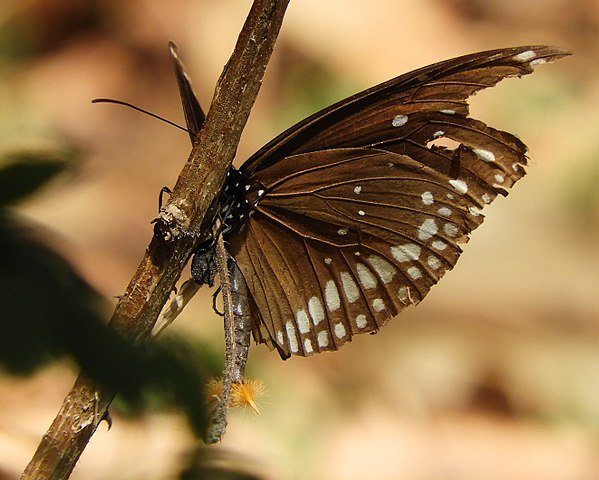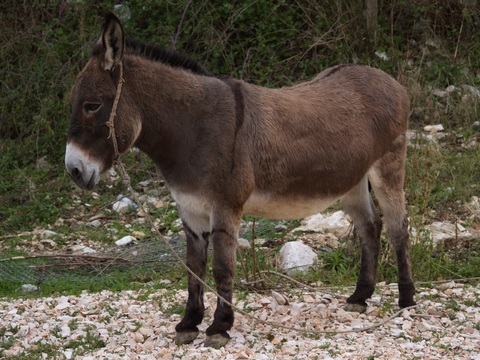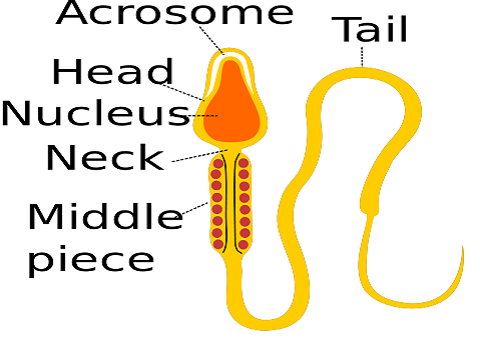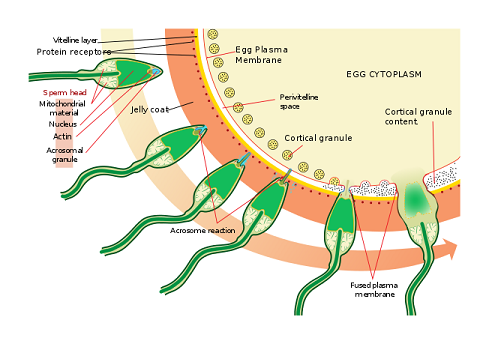Good day to everyone and welcome to new session of writing from me after what seemed like aeons. As some of you already know, I could not blog for some period because of issues associated with my laptop. I am glad to inform you all now that the issues have been fixed and hopefully, I will have time to resume regular session of blogging again - starting with today.
One of the first few things to learn in high school biology is taxonomy. That is the science of classifying living organisms. According to Carl Linnaeus, the man generally referred to as the father of taxonomy, living organisms are classified and grouped into various hierarchical levels based on certain similarities or relationship. Hence, living organisms were classified into different kingdoms, phyla, classes, orders, families, genus, and species. However, today's write-up is not about taxonomy per se, I will be taking a closer look at the lowest taxonomic category: that is the species. In case any of my audience is interested in reading more about taxonomy in general, I will recommend this link.

The concept of species
The 'species' occupies the lowest rung of the taxonomic ladder as far as classification of living organisms is concerned. Organisms classified as the same species share a lot of characteristics, including morphological, behavioural, genetic biochemical among other features. A closer look at the definition of species throws up an interesting subject that is worth discussing. Simply put:
species is a group of individuals capable of producing fertile offsprings through breeding or mating.
There are billions of plants and animal species on earth along with species of organisms in other kingdoms such as protista, monera, and fungi. In earnest, what qualifies two organisms as same species is their ability to produce fertile offsprings through mating. Nature has a way of reproductively isolating each species of organism in order to ensure that inter-species breeding does not take place and if it does takes place, the resulting offspring will appear infertile. For example, humans have been reported and are known to engage in sexual activities with animals such as horses, dogs, apes etc but have never been able to produce human/animal hybrid. The closest that scientists have come to producing inter-species hybrid yielded infertile offsprings as in the case of a mule which is a horse/donkey hybrid, liger/in which are tiger/lion hybrids among many several other examples.
 [pxhere cc0](https://pxhere.com/en/photo/449854)
[pxhere cc0](https://pxhere.com/en/photo/449854)However, exceptions usually occur when breeding takes place between closely related species. Example of such is found in beefalo which is a hybrid of cattle/buffalo and wolfdogs which are hybrids of wolves and dogs. Generally, it is extremely rare but scientifically possible for inter-species hybrids to be fertile, especially in closely related species as cited in the above examples. This is simply because “Species” is a term meant to draw a line around a group with no specific agreement about where exactly such line is to be drawn.
The process of fertilization
In sexually reproducing animals living organisms, the male produces haploid sperms through meiosis while the females produces eggs through the same means. These two gametes fuse together in a process known as fertilization to form a diploid zygote. In animals, the zygote through repeated cell division and embryogenesis eventually develops to become a new organism while a new fruit is formed in plants. These processes only happen in reproductively compatible individuals, that is individual of the same species. What if sperms and eggs from different species of organims meet during fertilization process? In order to completely understand the answer to this question, let us have a closer look at the structure of human sperm and the egg and what usually happens during fertilization.
There are basically three components of the male sperm, the head which is made up of the acrosome, the cell membrane and the nucleus; the middle piece which contains filamentous core housing several mitochondria and the tail. The acrosome of the head houses the enzyme needed for penetrating the egg during fertilization while the nucleus contains all the genetic information in form of densely coiled chromatin fibres. It also contains organelles like the vacuole and the centriole. The mitochondria in the filamentous core of the middle piece function in the synthesis of ATP, the energy needed for the movement of the spermatocytes through the female cervix, uterus and uterine tubes while the tail is used like a paddle in the movement of the spermatocyte.
The ovum of females is is surrounded by three main envelopes including the vitelline membrane which is inner, thin, transparent and is secreted by ovum itself, the zona pellucid which is located at the middle, thick, transparent and non-cellular secreted partly by follicular cells and partly by the oocyte. The third is the corona radiate which is outer and thicker coat formed of radially elongated follicular cells. In between the vitelline membrane and zona pellucid lies a narrow perivitelline space. Within the ovum lies the cytoplasm which is well differentiated into transparent exoplasm or egg cortex and opaque endoplasm or ooplasm. The nucleus is usually large and commonly referred to as the germinal layer.
During fertilization processes, a sperm that will fertilize an ovum needs to pass through three barriers in order to reach ooplasm. These barriers include the jelly coat surrounding the ovum, the vitelline membrane together with the zona pellucid and of course the plasma membrane. The sperm first attaches itself tp the jelly coat of the ovum while the acrosome cap which usually contains digestive enzymes that is used in eating away the jelly layer of the ovum. Thereafter, the sperm reaches the vitelline layer and eventually fuses with the plasma membrane. At this junction, the sperm's nucleus enters the cytoplasm where it fuses the nucleus of the egg to form a zygote. A process is initiated during these fertilization processes which serves to prevent a situation of fusion of more than one sperm with an egg. This process is known as cortical reaction. Anyone interested in what happens during this process can read more here
So what happens if the sperm and egg of different species meet?
Like I said earlier, mating between two different species is not actually the issue, the issue is that often times, the mating results in no fertilization or formation of infertile offsprings and that only cases of mating between two closely related species can result in production of fertile offsprings.
In order to answer the question above, three events are possible if the sperm and egg of different species meet;
- No fertilization
- Fertilization, but resulting offspring becomes sterile
- Fertilization and resulting offspring normal.
In the first event, the vitelline layers prevents the sperm from getting access to the plasma membrane of the egg thereby preventing fusion from taking place. The layer is a species-specific boundary that is actively involved in sperm-egg recognition. Therefore, the layer has recognition mechanism that only permit sperm of same or similar species to pass through and get access to the plasma membrane of the egg.
Sometimes, the vitelline layer mistakes sperms from another species as being of same species with the egg and allows such sperms to go through and get attached to the plasma membrane of the egg resulting in fertilization. Such fertilization if not deleterious usually result in an invalid or sterile offsprings.
Two species even though different might have close phylogenetical relationship with each other. Mating between such species will results in normal fertilization and the resulting offsprings usually appear normal and fertile. Such is in the case of the beefalo and the wolfdog.
Other methods of reproductive isolation
The species-specific nature of the vitelline layer of the female ovum is one of the methods of reproductive isolation. By reproductive isolation, we are simply referring to various evolutionary mechanisms necessary for the process of speciation. These mechanisms could be before the zygote is formed otherwise known as pre-zygotic reproductive isolation mechanisms or after the zygotes have been formed otherwise known as post-zygotic reproductive isolation mechanisms. While the former include mechanisms such as gametic isolation as in the case of the vitelline layer of the ovum, behavioural isolation, temporal isolation and mechanical isolation, the latter include zygote mortality or non-viable hybrid and hybrid sterility. All these processes ensure that populations of organisms evolve into distinct species.
So next time you see species of different organism, you have an idea of went went down.
Thank you for reading.
Text References
species
is cross fertilization possible?
sperm
structure of human sex gametes
If you write STEM (Science, Technology, Engineering, and Mathematics) related posts, consider joining #steemSTEM on steemit chat or discord here

 By
By  By
By
Good to have you back and you came with a banger.
That was the highlight of your post and it just hit the nail on its head. I enjoyed every bit of this article
I will also like to add that the enzyme which is present on the acrosome cap of a sperm cell is “hyaluronidase” and enables it penetrate the ovum as youve stated 😀
Downvoting a post can decrease pending rewards and make it less visible. Common reasons:
Submit
Interesting. I didnt even know the name of thr enzyme before now. Thanks for adding to my knowledge. And yes, i am glad to be back as well.
Downvoting a post can decrease pending rewards and make it less visible. Common reasons:
Submit
You’re welcome 😎
Downvoting a post can decrease pending rewards and make it less visible. Common reasons:
Submit
Nice click.
Downvoting a post can decrease pending rewards and make it less visible. Common reasons:
Submit
I was taken by surprise when I read this:
But then, when you illustrated with the wolfdog (and beefalo) example, I was "Oh, of course". It helped me to put 2 + 2 together 😅
It is always good to revisit certain materials, and this post refreshed my memory about taxonomy. You made it very straight-forward @gentleshaid :)
Lots of love to you 😘
Downvoting a post can decrease pending rewards and make it less visible. Common reasons:
Submit
YEs, the phylogenetic closeness of cattle and buffalo makes beefalo to be a fertile inter-species hydrid, same as wolfdog.
it is always nice to have you around abigail. You are one of the people that make steemit a worthwhile social medium for me. Thanks for everything and I do have tons of love for you too
Downvoting a post can decrease pending rewards and make it less visible. Common reasons:
Submit
You are beautiful! Thank YOU for always being so kind and thoughtful! ❤
Downvoting a post can decrease pending rewards and make it less visible. Common reasons:
Submit
You are welcome dear :kisses:
Downvoting a post can decrease pending rewards and make it less visible. Common reasons:
Submit
Thank goodness for nature taking care of its own. You can only imagine what a human-dog child would look like if left in the hands of the bestiality practitioners.
I did attend biology classes in high school, but I can't remember hearing the word "taxonomy". I guess I just don't pay attention in biology classes :)
Downvoting a post can decrease pending rewards and make it less visible. Common reasons:
Submit
haha....well, you could be forgiven for not remembering taxonomy, but I can bet no biology teacher would miss that from the curriculum.
Even though nature tries to keep the earth sane through different mechanisms, man is tampering with some of these mechanisms and the end result of some of these tamperings might be disastrous. I will never be surprised if one day a mutant interspecies hybrid is created that might end up destroying the whole of mankind. :)
Downvoting a post can decrease pending rewards and make it less visible. Common reasons:
Submit
Oh, the apocalypse :)
The killer bots are coming :)
Downvoting a post can decrease pending rewards and make it less visible. Common reasons:
Submit
lol. killer bots indeed
Downvoting a post can decrease pending rewards and make it less visible. Common reasons:
Submit
Reproductive isolation is unique in evolution because it is not a trait possessed by members of a single species. nice piece, by the way welcome back.
Downvoting a post can decrease pending rewards and make it less visible. Common reasons:
Submit
Thank you saho.
Downvoting a post can decrease pending rewards and make it less visible. Common reasons:
Submit
I have seen quite a number of movies created on the idea that the product of the cross breed between man and animal will posses special abilities. Man can be over ambitious, am glad nature puts such things in check, preventing us from endangering ourselves. Just imagine how it would be to have a co-worker with a dog face.
Downvoting a post can decrease pending rewards and make it less visible. Common reasons:
Submit
Like i said, perhaps it wont be possible naturally but scientist are already carrying out assisted interspecies fertilization. That could spell doom one day
Downvoting a post can decrease pending rewards and make it less visible. Common reasons:
Submit
I pray it doesn't come to that.
Downvoting a post can decrease pending rewards and make it less visible. Common reasons:
Submit
I will just quite the job and run away without notifying my employer.How on earth will they employed such a monster!!
Downvoting a post can decrease pending rewards and make it less visible. Common reasons:
Submit
Lol.. I will do the same @steepup
Downvoting a post can decrease pending rewards and make it less visible. Common reasons:
Submit
Welcome back sire. I'm glad you now have your system back. Well, I got mine today too.
This is a nice comeback post. Even though I had good grades in Biology, I really don't fancy it enough to remember the terms. However, taxonomy is a well known topic which I still recall a bit of
But then, your input is quite simple and clear. I learnt more.
I was able to learn the concept of interbreeding and how fertilization of species results.
Thanks for sharing this and anticipating more.
Downvoting a post can decrease pending rewards and make it less visible. Common reasons:
Submit
Thank you for reading sir.
Downvoting a post can decrease pending rewards and make it less visible. Common reasons:
Submit
Always a pleasure
Downvoting a post can decrease pending rewards and make it less visible. Common reasons:
Submit
Hello, as a member of @steemdunk you have received a free courtesy boost! Steemdunk is an automated curation platform that is easy to use and built for the community. Join us at https://steemdunk.xyz
Upvote this comment to support the bot and increase your future rewards!
Downvoting a post can decrease pending rewards and make it less visible. Common reasons:
Submit
Hummmm yummy yummy. I actually enjoy this post. I just have a good understanding of how fertilization take place. I also get to know what might leads to infertility in human,so if the sperm is not strong enough, it may not be able to penetrate through the three layers and then fertilize.
And I think it's good the way the maker of all things made each specie such that unguided crossbreeding will not result to monster! Imagine if lion and tiger can mate naturally!!
@gentleshaid, this is really trilling , welcome back after a very lonnnnnnnnng time.
Really missed you.
Downvoting a post can decrease pending rewards and make it less visible. Common reasons:
Submit
Thak you steepup. The organization of the ecosystem is top notch.
Downvoting a post can decrease pending rewards and make it less visible. Common reasons:
Submit
I've not heard about beefalo before. Though I've heard about some other hybrids like Liger (Male Lion + Female Tiger) and Tigon (Male Tiger + Female Lion).
Nice piece buddy
Downvoting a post can decrease pending rewards and make it less visible. Common reasons:
Submit
I guess there are lots of info out there that we dont know about. Thanks for the head up bro
Downvoting a post can decrease pending rewards and make it less visible. Common reasons:
Submit
When I found this post earlier this morning, I wondered how it has gone past me for so many days. I'm grateful that you put something like this together, I've learnt a great deal from this post to the extent that when I saw the conclusion, I was pained, I wish you could just continue. Anyways everything ends, even the very good things. Thanks for the knowledge.
Downvoting a post can decrease pending rewards and make it less visible. Common reasons:
Submit
Thank you @sogless. Even though this one has ended, expect more interesting posts from me. I will try my best not to let you down.
Downvoting a post can decrease pending rewards and make it less visible. Common reasons:
Submit
Great post. I did not know:
In order to answer the question above, three events are possible if the sperm and egg of different species meet;
I also did not know that cattle/buffalo was called beefalo.
Your post was very interesting and a great read :)
Downvoting a post can decrease pending rewards and make it less visible. Common reasons:
Submit
thanks a bunch.
Downvoting a post can decrease pending rewards and make it less visible. Common reasons:
Submit